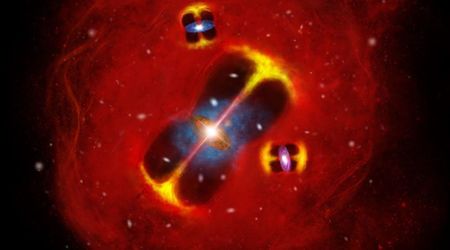NASA's Perseverance Rover is digging into 'Krokodillen' to explore some of the oldest Martian rocks

NASA’s Perseverance Mars rover is investigating a region called “Krokodillen,” known for having the oldest rocks on the planet. The region was a significant layer between the old rocks of Jezero Crater’s rim and the plains past it, per NASA. “The last five months have been a geologic whirlwind,” stated Ken Farley, the deputy project scientist for Perseverance from Caltech in Pasadena. “As successful as our exploration of ‘Witch Hazel Hill’ has been, our investigation of Krokodillen promises to be just as compelling,” he said about the Perseverance science team’s wishlist area.

Krokodillen translates to “the crocodile” in the Norwegian language and it was named by the scientists of the Perseverance mission after a mountain ridge on the island of Prins Karls Forland, Norway. The area is a 73-acre rocky plateau situated to the west and south of Witch Hazel Hill. It was found earlier that the region harbored clay in its bedrock, and this clay was required for the formation of liquid water. Finding clay in other regions of Krokodillen can reinforce the presence of abundant liquid water in the Martian past, likely before the formation of the Jezero Crater, by the asteroid impact.

Minerals of clay could be useful for life, as on Earth, these components have preserved organic compounds. The team found a rock sample in July 2024 with chemical signatures and structures of past life. “If we find a potential biosignature here, it would most likely be from an entirely different and much earlier epoch of Mars’ evolution than the one we found last year in the crater with ‘Cheyava Falls,’” stated Farley. “The Krokodillen rocks formed before Jezero Crater was created, during Mars’ earliest geologic period, the Noachian,” he added about the ancient rocks.

NASA’s Mars orbiters presented information that hinted at rich olivine and carbonate on the outer edges of Krokodillen. Olivine formed from magma, but carbonate minerals resulted from a reaction between rock and dissolved carbon dioxide in liquid water, per NASA. Carbonate minerals on Earth preserve fossilized ancient microbial life and track ancient climate. Presently, the rover is investigating a rocky outcrop in Krokodillen known as “Copper Cove.” This region may contain evidence of Noachian rocks from the past of Mars.

The exploration of Krokodillen will also test the nuclear-powered rover’s new sampling strategy. It allowed for samples to be left open in case the rover identifies a better and scientifically compelling geologic feature ahead. The recent unsealed sample of the rover is a rock core named “Bell Island,” with small round stones called spherules. If a better sample is identified, the rover will be directed to remove the tube from storage and dump the previous sample. Perseverance has collected and sealed two regolith samples, three witness tubes, and one atmospheric sample.

“We have been exploring Mars for over four years, and every single filled sample tube we have on board has its own unique and compelling story to tell,” stated Perseverance acting project scientist Katie Stack Morgan of NASA’s Jet Propulsion Laboratory in Southern California. The team has only a few empty sample tubes remaining so they have decided to keep them unsealed for now, in case they chance upon better findings.









